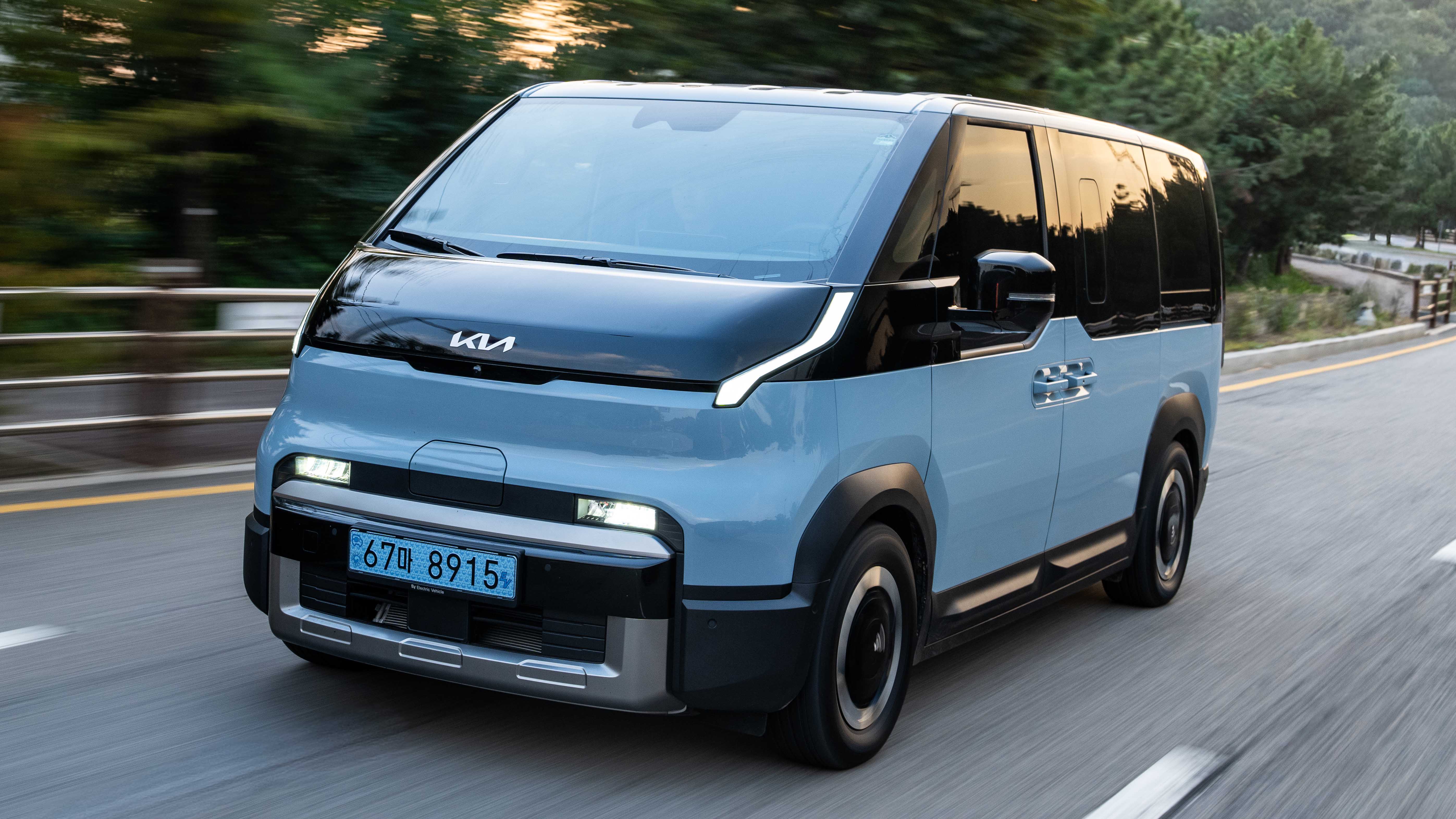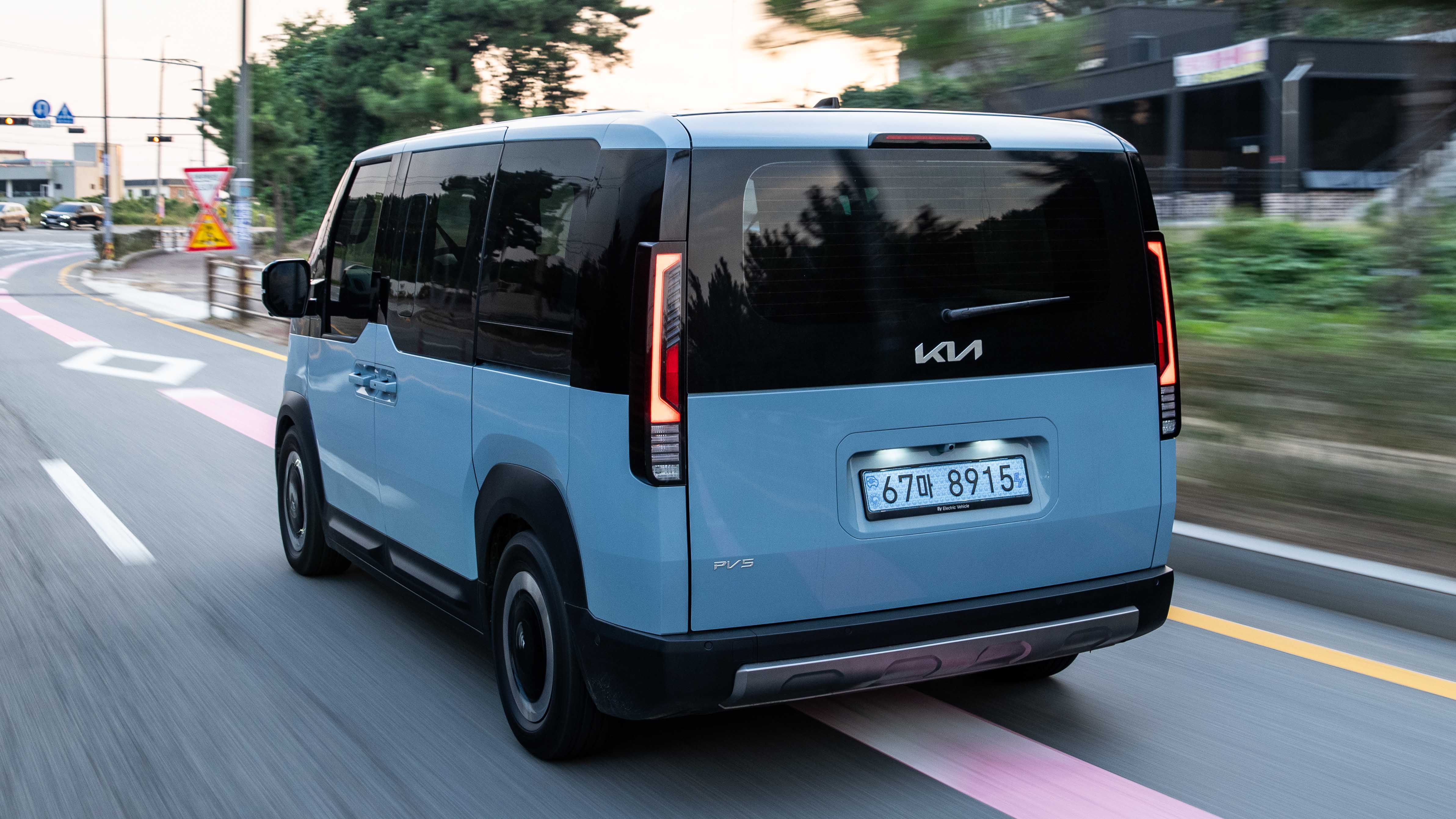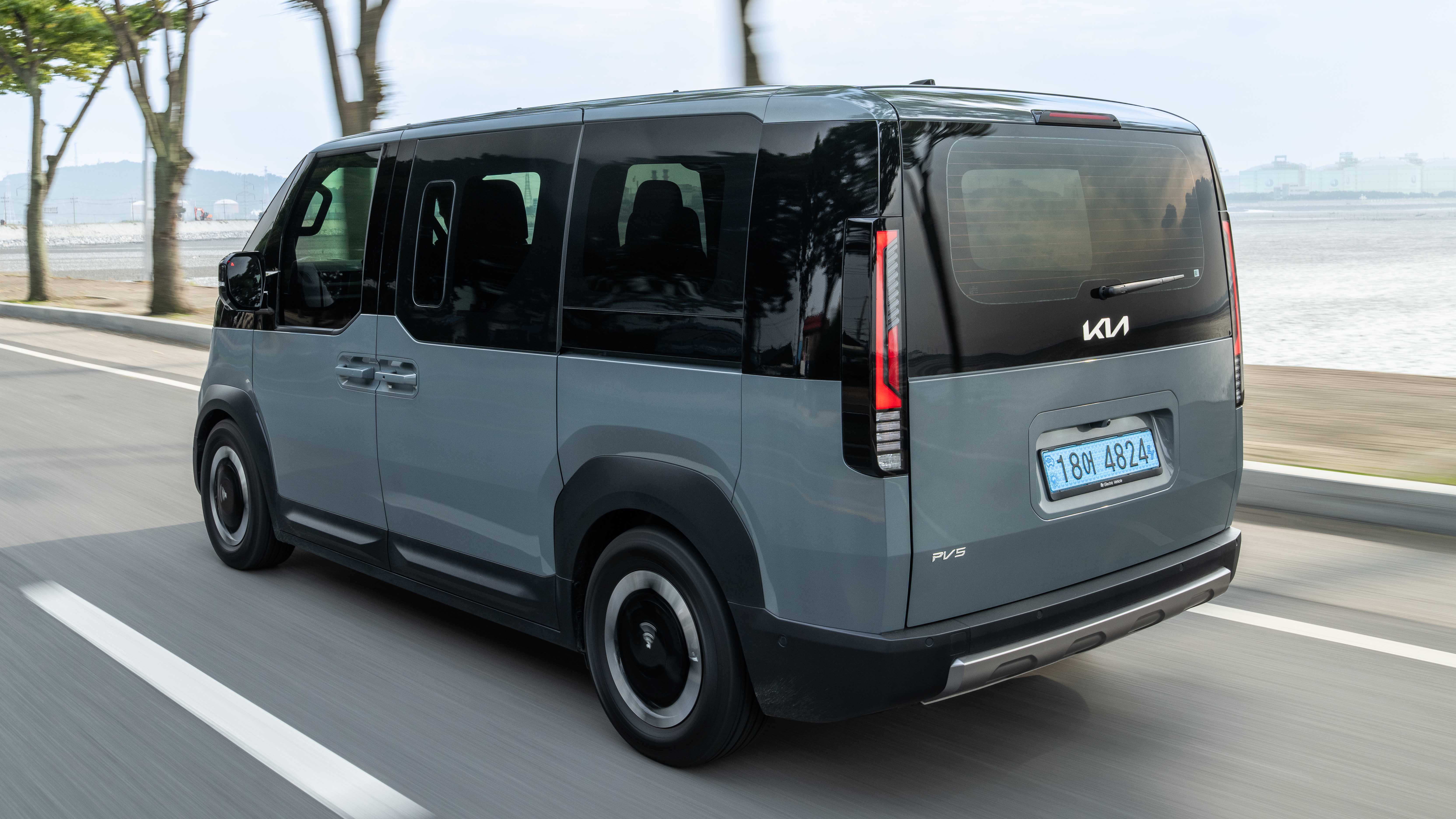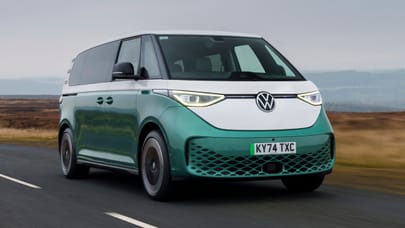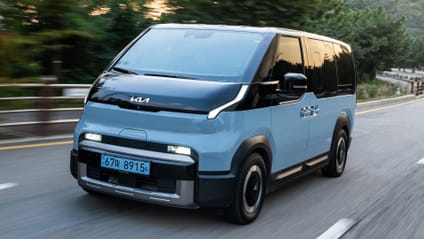
Good stuff
Refined ride, cavernous interior, superb value
Bad stuff
A bit drab inside, no 300+ mile version, doesn’t charge especially fast
Overview
What is it?
Whatever you want it to be, man. The Kia PV5 is an electric van with a Lego-like modular construction, meaning endless possibilities. It will go on to spawn many variants but, if none of them do it for you, you can also have it as a bare chassis cab and drop whatever you want onto the back. Refrigerator unit? Pickup bed? Ice cream van? Anything is possible. For now however, we’re focusing on the passenger version.
And actually, even that doesn’t narrow it down much. The PV5 will soon be offered with five, six or seven seats, or as a wheelchair accessible vehicle, but at launch we get the five-seater. Think of it as an ultra roomy estate car.
Sounds a bit Buzz-y.
Bingo. Its closest (really its only) rival is Volkswagen’s retro bus. Both sit on a proper EV skateboard chassis, both are offered in passenger or cargo versions, and they’re a similar size.
That’s formidable competition. The Buzz is a TG award winner and draws on rich heritage that Kia can’t match (no offence to any Kiamaster Bongo 9 fans), but the PV5 has a few aces in its incredibly spacious hole. It arguably matches the VW for design, edges it for efficiency, and smashes it on price. That last one can’t be overstated - the five seat PV5 Passenger is over twenty grand cheaper than its German opposite number. Unglaublich!
In family car terms, that means it’s priced in line with stuff like the Volvo EX30, Renault Scenic and Kia EV3. But it’s hard to call those rivals given you could cram them all into the PV5’s boot.
Is it really that big inside?
Cavernous. Again we’re reminded how horribly backwards we went as a society when we forsook MPVs for SUVs. It’s hard to say whether it’s more roomy than the VW - both offer what feels like infinite space for all occupants - but the boot is measurably bigger despite the PV5 being 2cm shorter and 9cm narrower than the SWB Buzz.
Tell me of its underbits.
The platform is called the PBV: “Platform Beyond Vehicle”. Which makes us want to do a Pretty Big Vomit. But silly name aside, it’s clever stuff.
It’s derived from the excellent E-GMP that underpins everything from Kia EV3 to Hyundai Ioniq 9 but the emphasis here is on standardisation, to enable that tasty price. You get a choice of two battery sizes, respectively offering 183 or 256 miles of range, but aside from that, every PV5 is pretty much identical from the floor down and from the front seats forward.
All cars use a single motor FWD setup which makes 160bhp in the 71kWh version or 120bhp when married to the 51.5kWh lump. It’s the same motor, it just pulls more power from the bigger battery. Because electric reasons.
In the coming years, that PBV platform will underpin larger PV7 and PV9 vans. Unclear exactly when it will go “beyond” vehicles and be used to power satellites and submarines.
How does it drive?
Beautifully. It’s not just refined for a van, it’s refined for an electric family car. The ultra low centre of gravity makes for flat, composed cornering and it’s quiet inside even by EV standards. 0-60 takes almost 11 seconds - or a plodding 12.8 in the standard range car - but being electric, it has ample zip off the line and is perfectly capable of motorway speed overtakes.
Better still, and despite having the proportions of a toaster, it’s bewilderingly efficient, meaning the quoted WLTP range figures are entirely achievable in the real world, without having to drive at half the speed limit or yell at your passengers for using the air con.
So, it’s a slam dunk?
Almost. If we’re being pernickety, the interior looks and feels a bit drab - certainly compared to that of the Buzz - and all that standardisation leaves little room for personalisation. Plus the lack of a 300+ mile XL battery version might limit its usefulness for those who drive all day for work - likewise the slightly meh 150kW charge speed.
But we know the E-GMP can cram in up to 110kWh of battery (see Ioniq 9) so it’s not bonkers to imagine this PBV platform could accommodate a bigger pack in the future too.
Our choice from the range

What's the verdict?
This is another immensely impressive entry from a brand that can do little wrong of late. We’ll leave it to more sensible people to assess how the PV5 fares as a commercial vehicle but as a big family car, it’s compelling: refined, interesting and preposterously spacious.
It makes the cookie cutter crossovers that dominate our roads look cramped and unimaginative and makes the brilliant ID. Buzz look wildly overpriced. Which, truthfully, we always knew it was, but it was easier to ignore when there was no direct rival. Now there is - and it’s outstanding.
Between this and the upcoming PV7 and PV9, Kia says that it will sell 250,000 electric vans by 2030. Based on what we’ve seen so far, we believe them.
The Rivals
Trending this week
- 2026 TopGear.com Awards
The very best cars of the year: welcome to the 2026 TopGear.com Awards




